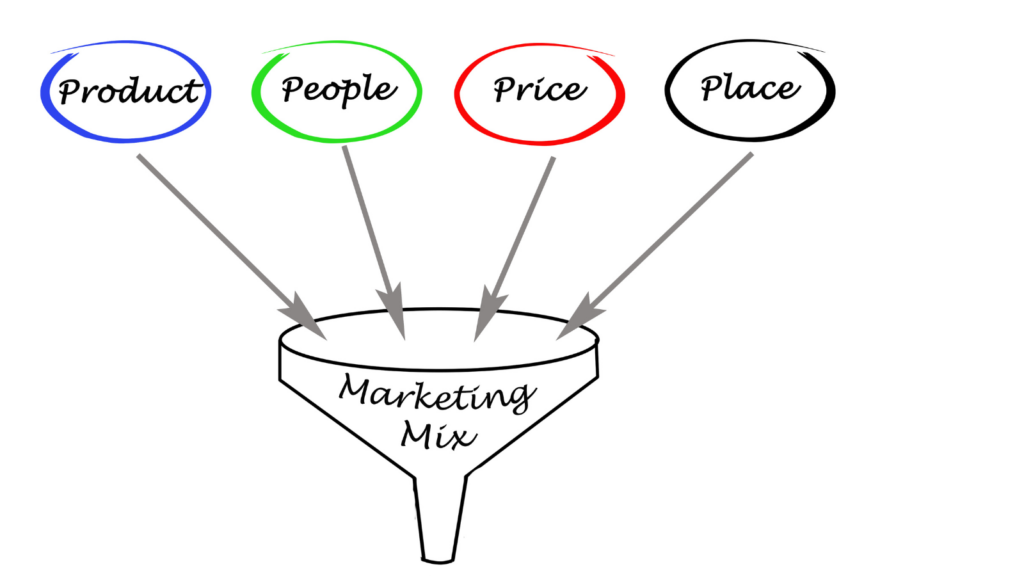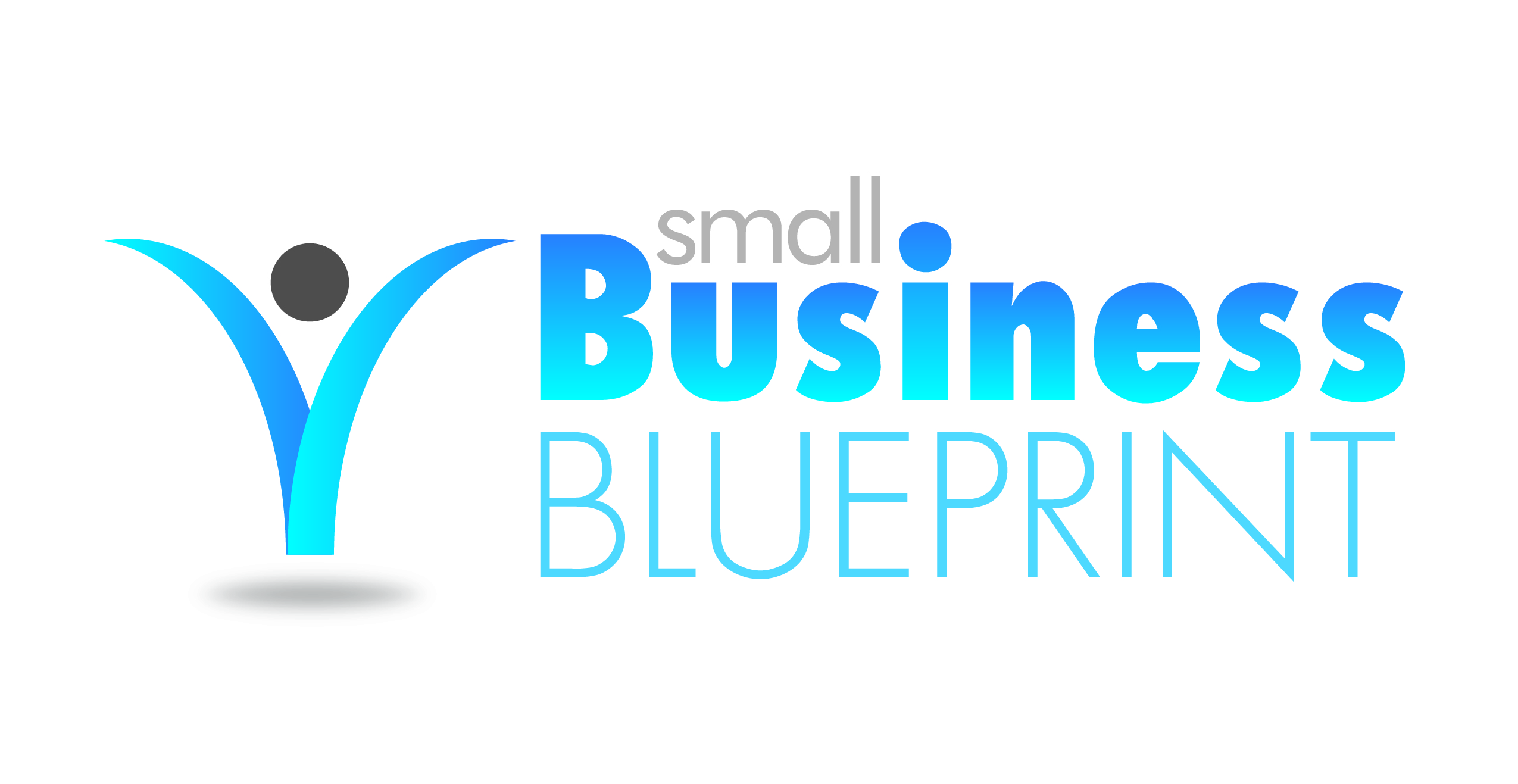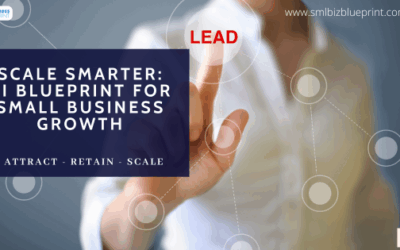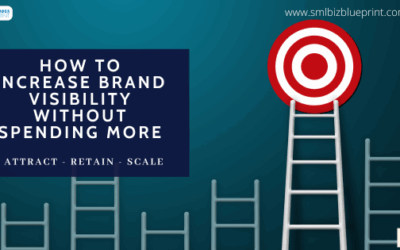As 2024 comes to a close, it’s time to gear up for a new year of possibilities and challenges in marketing.
The digital landscape evolves rapidly, and staying ahead requires a proactive approach.
This list of 13 expert tips for transitioning your marketing strategy into 2025 is designed to help you build on what’s worked, adapt to emerging trends, and set your business up for success.
Whether you’re looking to optimise your campaigns, embrace innovative tools, or refine your messaging, these actionable insights will save you time, boost creativity, and ensure your strategy remains effective in an ever-changing market.

#1 Audit Your 2024 Performance
The first step to a successful marketing strategy for 2025 is to understand what worked—and what didn’t—in 2024.
Conducting a thorough performance audit allows you to identify key strengths, uncover weaknesses, and align your efforts with your business goals.
By reflecting on past campaigns, customer engagement trends, and ROI metrics, you’ll establish a clear foundation for building a forward-thinking strategy.
Analyse your website traffic, conversion rates, email open rates, and ad performance to gain insights into customer behaviour and preferences. Compare these findings to your original objectives to determine where adjustments are needed.
Remember, a solid marketing strategy begins with learning from the past.
Tips
- Categorise Campaigns by Success Level – Group your 2024 campaigns into “highly effective,” “moderately effective,” and “underperforming” categories. This helps you prioritise what to replicate or improve.
- Evaluate Your Customer Journey – Map out the customer journey to identify where leads drop off or convert. Look for opportunities to enhance touchpoints like landing pages or checkout processes.
- Benchmark Against Industry Standards – Use tools like Google Analytics or HubSpot to compare your metrics to industry averages, helping you understand how you measure up.
#2 Embrace Data-Driven Insights to Guide Your Strategy
In today’s competitive landscape, relying on intuition alone won’t cut it. Data-driven decision-making is the cornerstone of successful marketing strategies.
You can pinpoint your audience’s preferences by leveraging analytics and insights, understand what resonates most, and optimise campaigns to deliver measurable results.
Dive into data from customer interactions, purchase histories, social media engagement, and website behaviour. Identify trends, patterns, and opportunities to create targeted, personalised campaigns that increase ROI.
Don’t forget to use predictive analytics to anticipate future trends and proactively shape your strategy.
Tips
- Centralise Your Data – Use a customer relationship management (CRM) platform to consolidate data from different touchpoints, making analysis simpler and more actionable.
- Track Key Metrics Consistently – Focus on metrics like cost per lead (CPL), customer acquisition cost (CAC), and customer lifetime value (CLV) to assess your performance over time.
- Run A/B Tests – Experiment with different versions of ads, emails, or landing pages to determine what works best for your target audience.
#3 Align Your Goals with Market Trends for 2025
Adapting to market trends isn’t just about keeping up—it’s about staying ahead.
As consumer behaviours evolve and technology advances, aligning your marketing goals with emerging trends will position your business for success.
Identify key industry shifts, such as increased demand for sustainable products, personalised experiences, or cutting-edge technology integrations like AI.
Consider how these trends affect your audience and adjust your messaging, product offerings, or services accordingly. For instance, if sustainability is a priority for your customers, incorporate eco-friendly initiatives into your campaigns.
Keeping your goals flexible and trend-aware ensures your strategy remains relevant and impactful.
Tips
- Conduct Market Research Regularly – Use surveys, focus groups, and tools like Google Trends to monitor shifts in consumer preferences and industry dynamics.
- Stay Agile – Set short-term objectives that can be adjusted as trends evolve, allowing you to respond quickly to new opportunities.
- Follow Industry Influencers – Track thought leaders and influencers in your field to gain insights into emerging trends and customer expectations.
Transform Insights Into Action!
Our newsletter delivers monthly tips to help you automate, optimize, and grow smarter—not harder. Subscribe now and get started!
Join Today
#4 Refine Your Target Audience for Maximum Impact
Understanding your audience is critical for delivering messages that resonate and drive action. As markets evolve, so do customer behaviours, needs, and expectations.
Refining your target audience ensures that your marketing efforts are laser-focused, helping you maximise engagement and ROI.
Start by revisiting your buyer personas and segmenting your audience based on demographics, psychographics, and purchasing behaviours. Look for any emerging sub-groups within your customer base that could represent new opportunities.
By tailoring your campaigns to specific audience segments, you can deliver highly personalised experiences that build trust and loyalty.
Tips
- Leverage Social Media Analytics – Platforms like Facebook Insights and LinkedIn Analytics can provide detailed data about your followers’ interests, locations, and behaviours.
- Conduct Post-Purchase Surveys – Gather feedback from customers after their purchase to understand their motivations and satisfaction levels.
- Use Retargeting Campaigns – Focus on re-engaging website visitors or abandoned cart users to capture potential leads who are already familiar with your brand.
#5 Leverage AI and Automation to Streamline Efforts
Incorporating AI and automation into your marketing strategy is no longer optional; it’s essential for staying competitive.
From predictive analytics to personalised recommendations, AI-powered tools enable you to work smarter, not harder. Automation allows you to handle repetitive tasks efficiently, freeing up time to focus on creative and strategic initiatives.
Use AI-driven platforms to analyse customer data, predict trends, and optimise your campaigns in real time. Automation can be implemented in email marketing, social media scheduling, and lead nurturing to ensure consistent and timely communication.
Together, AI and automation boost efficiency while delivering a superior customer experience.
Tips
- Adopt Chatbots for Customer Support – Implement AI chatbots on your website to handle common inquiries, saving time and improving response rates.
- Use Predictive Analytics – Invest in tools like Google Analytics 4 or Salesforce Einstein to predict customer behaviours and tailor campaigns accordingly.
- Automate Email Sequences – Set up drip campaigns that automatically send personalised emails based on customer actions, such as a welcome series or abandoned cart reminders.
#6 Diversify Your Content Strategy Across Platforms
A one-size-fits-all approach no longer works in today’s fragmented digital landscape.
Diversifying your content strategy across multiple platforms ensures you reach your audience wherever they spend their time. Tailor your messaging to each platform’s unique format, audience expectations, and engagement style for maximum impact.
Consider leveraging blogs, social media posts, videos, podcasts, and email campaigns to provide value in different ways.
Repurpose high-performing content to save time while extending its reach. For instance, a blog post can be converted into a video, an infographic, or a series of social media posts, maximising its potential.
Tips
- Prioritise Visual Content – Use platforms like Instagram, TikTok, or YouTube to deliver engaging, visual-first content that resonates with audiences.
- Experiment with New Formats – Try creating short-form videos, interactive quizzes, or live streams to engage users in fresh ways.
- Leverage Analytics to Refine – Use tools like Sprout Social or Hootsuite to track performance across platforms and refine your strategy based on data insights.

#7 Prioritize Mobile-First Marketing Techniques
With mobile devices accounting for a significant share of online traffic, optimising your marketing strategy for mobile users is essential. Mobile-first techniques ensure that your content, ads, and website are accessible, engaging, and functional for users on smartphones and tablets.
Start by ensuring your website is mobile-friendly, with responsive design and fast loading times. Focus on creating concise, visually appealing content that captures attention quickly.
Mobile-first also means leveraging features like SMS marketing, mobile app engagement, and geo-targeting to reach customers more effectively.
Tips
- Optimise for Voice Search – Many mobile users rely on voice assistants; include conversational keywords in your SEO strategy to align with voice search queries.
- Use Mobile-Friendly Formats – Create vertical videos, swipeable social media posts, and tap-friendly email CTAs to engage mobile users effectively.
- Test Regularly on Mobile Devices – Ensure your website and campaigns function seamlessly across different screen sizes and operating systems.
#8 Experiment with Emerging Technologies like AR/VR
Emerging technologies such as augmented reality (AR) and virtual reality (VR) are transforming how businesses engage with their audiences. These tools create immersive, interactive experiences that captivate customers and make your brand memorable.
From virtual product try-ons to AR-enhanced advertisements, these technologies offer innovative ways to connect with consumers.
Integrate AR and VR into your strategy by exploring their potential to showcase products or services. For instance, AR can allow customers to visualise how furniture fits in their space, while VR can simulate an in-store shopping experience from home.
Embracing these technologies signals that your brand is future-forward and customer-centric.
Tips
- Start Small – Before committing to larger-scale projects, experiment with basic AR features, such as Instagram filters or AR-enabled product previews.
- Collaborate with Tech Partners – Partner with developers or platforms specialising in AR/VR to ensure a seamless and high-quality user experience.
- Promote Interactivity – Encourage users to share their AR/VR experiences on social media to increase visibility and engagement.
#9 Focus on Personalization for Stronger Customer Engagement
Personalisation has moved from being a “nice-to-have” to a “must-have” in marketing.
Customers expect tailored experiences that reflect their preferences, behaviours, and needs. By delivering personalised messages, offers, and content, you build stronger relationships and encourage loyalty.
Utilise data insights to segment your audience and create targeted campaigns. From personalised email greetings to product recommendations based on browsing history, the opportunities are endless.
When done effectively, personalisation makes customers feel valued, boosting engagement and conversions.
Tips
- Leverage Dynamic Content – Use tools that allow for real-time personalisation on websites and emails, such as showing product recommendations based on user behaviour.
- Segment Your Audience – Group customers by demographics, purchase history, or engagement level to tailor your messaging more effectively.
- Automate Personalized Touchpoints – Set up automated triggers, like abandoned cart emails or special birthday offers, to engage customers at the right time.
Transform How You Work with Pulse!
Get step-by-step guides, AI-powered strategies, and marketing insights to help your business thrive. Subscribe today for only $7 a month
#10 Strengthen Your Brand’s Voice Across All Channels
A consistent and compelling brand voice is essential for building trust and recognition. In an era of fragmented digital touchpoints, your audience interacts with your brand across various platforms.
Ensuring your messaging, tone, and visuals are aligned creates a seamless and professional experience for your customers.
Define your brand’s personality and core messaging, and ensure they are reflected in every piece of content, from social media posts to email newsletters.
A strong brand voice helps you stand out in crowded markets and fosters an emotional connection with your audience.
Tips
- Create a Brand Style Guide – Document your brand’s tone, language, and visual elements to ensure consistency across all teams and channels.
- Audit Existing Content – Review your current marketing materials to identify any inconsistencies and refine them to match your brand identity.
- Tailor Your Voice by Platform – While maintaining consistency, adapt your tone to fit the platform. For example, be more casual on Instagram and professional on LinkedIn.
#11 Enhance Customer Retention with Loyalty Programs
Acquiring new customers is important, but retaining existing ones is even more valuable.
Loyalty programs are a proven strategy to boost customer retention by rewarding repeat purchases and fostering long-term relationships. A well-designed program encourages customers to stay engaged with your brand and incentivises continued loyalty.
Consider offering exclusive perks, discounts, or points-based rewards to make your program appealing. Personalise rewards based on customer preferences to add an extra touch.
Loyalty programs drive repeat business and turn satisfied customers into brand advocates who can help grow your audience.
Tips
- Offer Tiered Rewards – Create levels (e.g., silver, gold, platinum) that encourage customers to increase spending to unlock more valuable perks.
- Integrate with Mobile Apps – Use mobile apps to make tracking and redeeming rewards convenient for customers, boosting participation.
- Promote Exclusive Access – Offer early access to sales or new products as a loyalty reward to make customers feel valued and appreciated.
#12 Plan for Flexibility in Your Campaign Budgets
The digital marketing landscape is dynamic, with trends, algorithms, and consumer behaviours shifting rapidly.
Planning for flexibility in your campaign budgets allows you to adapt quickly to new opportunities or challenges. Instead of rigidly allocating funds, reserve a portion of your budget to test emerging platforms, pivot underperforming campaigns, or seize trending opportunities.
Allocate core resources to proven channels while keeping room for experimentation. Monitor the performance of each campaign closely and adjust spending in real-time to maximise ROI.
Flexibility ensures you remain competitive and can capitalise on changes without overcommitting to less effective strategies.
Tips
- Implement a Test-and-Learn Approach – Dedicate 10-20% of your budget to experiment with new channels or ad formats to discover what works best.
- Use Real-Time Analytics – Leverage analytics tools to monitor campaign performance and make data-driven budget adjustments.
- Create a Contingency Fund – Set aside a portion of your budget for unforeseen opportunities, such as a viral trend or unexpected market shift.
#13 Evaluate Your KPIs to Ensure Continuous Improvement
A successful marketing strategy isn’t static—it evolves through regular evaluation and optimisation. Key performance indicators (KPIs) provide valuable insights into the effectiveness of your campaigns, helping you identify strengths, weaknesses, and areas for growth.
By consistently monitoring your KPIs, you can make informed decisions to refine your approach and maximise results.
Focus on metrics that align with your goals, such as customer acquisition cost (CAC), conversion rates, or customer lifetime value (CLV). Use these benchmarks to track progress and set realistic targets for improvement.
Regularly reviewing and analysing KPIs ensures your strategy remains agile and impactful.
Tips
- Set SMART Goals – Ensure your KPIs are Specific, Measurable, Achievable, Relevant, and Time-bound to create actionable benchmarks.
- Review KPIs Monthly – Schedule monthly reviews of your KPIs to spot trends early and adjust your strategy proactively.
- Use Dashboards – Implement tools like Google Data Studio or Tableau to visualise your KPIs and make them easier to interpret.
Conclusion
Transitioning your marketing strategy to 2025 doesn’t have to be overwhelming.
By auditing your 2024 performance, embracing data-driven insights, aligning with market trends, refining your target audience, and leveraging innovative technologies like AI and AR/VR, you’ll set the stage for success.
Diversifying your content, focusing on personalisation, and strengthening your brand voice ensure your strategy resonates with your audience, while loyalty programs and flexible budgeting help maximise retention and ROI.
Finally, by continuously evaluating your KPIs, you’ll maintain an agile and effective approach throughout the year.
Now is the time to take action and prepare for what’s ahead. Implement these 13 tips to create a marketing strategy that stands out in 2025.
Ready to elevate your marketing game? Subscribe to our newsletter for expert insights, actionable strategies, and the latest industry trends delivered straight to your inbox!
FAQs
Q1: Why is auditing past performance essential for a marketing strategy?
A1: Auditing past performance helps identify what worked and what didn’t, providing a clear foundation to build on. It ensures your strategy is data-driven and aligned with proven successes while addressing areas needing improvement.
Q2: How can AI and automation improve my marketing efforts?
A2: AI and automation streamline repetitive tasks, analyse data in real-time, and deliver personalised experiences at scale. This not only boosts efficiency but also improves customer engagement and ROI.
Q3: What’s the importance of personalising marketing campaigns?
A3: Personalised campaigns resonate more with customers, creating stronger connections and increasing conversions. Tailoring your messaging to individual preferences makes customers feel valued, which drives loyalty and long-term growth.
Q4: How can I effectively diversify my content strategy?
A4: Start by repurposing high-performing content into different formats like videos, blogs, and social media posts. Experiment with new formats like interactive quizzes or live streams to keep your audience engaged across multiple platforms.
Q5: What are the benefits of using AR/VR in marketing?
A5: AR/VR technologies create immersive and interactive experiences that captivate customers. They allow users to engage with products or services in new ways, fostering deeper connections and boosting purchase intent.
Q6: How do I ensure flexibility in my marketing budget?
A6: Allocate a portion of your budget for testing new strategies or responding to market changes. Use real-time analytics to adjust spending and maintain a contingency fund for unexpected opportunities or challenges.
Q7: What are the key KPIs to track for continuous improvement?
A7: Focus on KPIs like customer acquisition cost (CAC), conversion rates, customer lifetime value (CLV), and return on ad spend (ROAS). Regularly reviewing these metrics helps refine your strategy and ensure its effectiveness.
Other Articles
9 Proven Content Ideas to Keep Your Brand Active While on Holidays




